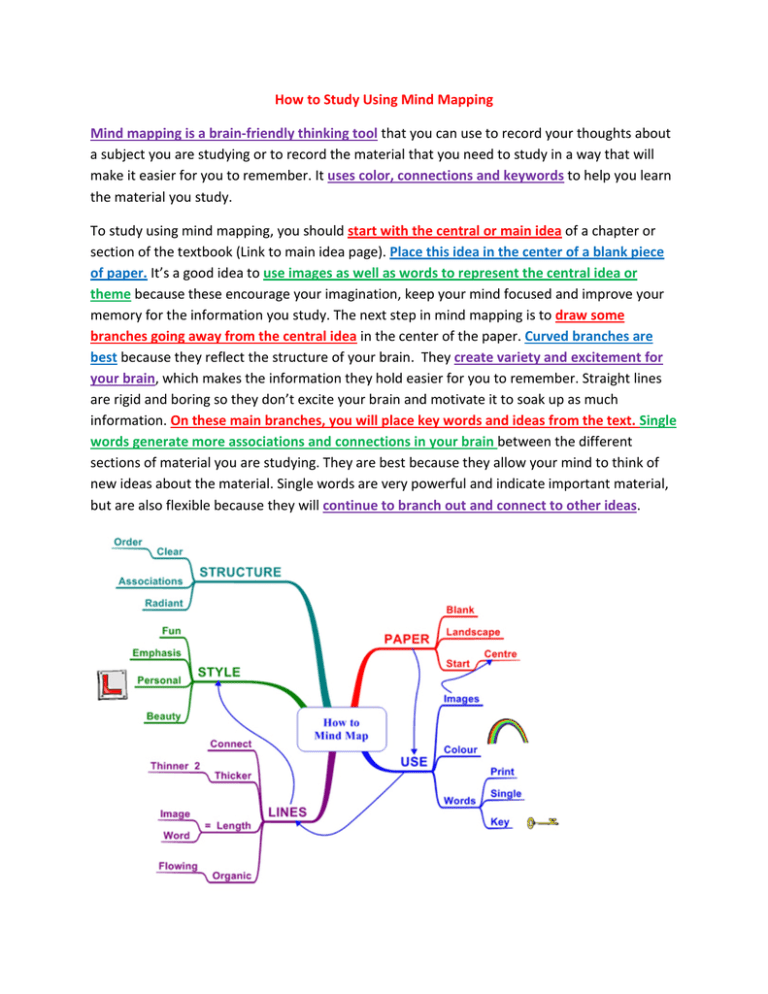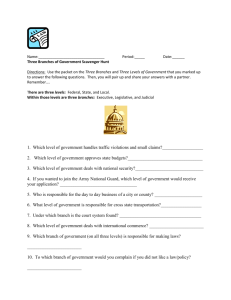How to Study Using Mind Mapping
advertisement

How to Study Using Mind Mapping Mind mapping is a brain-friendly thinking tool that you can use to record your thoughts about a subject you are studying or to record the material that you need to study in a way that will make it easier for you to remember. It uses color, connections and keywords to help you learn the material you study. To study using mind mapping, you should start with the central or main idea of a chapter or section of the textbook (Link to main idea page). Place this idea in the center of a blank piece of paper. It’s a good idea to use images as well as words to represent the central idea or theme because these encourage your imagination, keep your mind focused and improve your memory for the information you study. The next step in mind mapping is to draw some branches going away from the central idea in the center of the paper. Curved branches are best because they reflect the structure of your brain. They create variety and excitement for your brain, which makes the information they hold easier for you to remember. Straight lines are rigid and boring so they don’t excite your brain and motivate it to soak up as much information. On these main branches, you will place key words and ideas from the text. Single words generate more associations and connections in your brain between the different sections of material you are studying. They are best because they allow your mind to think of new ideas about the material. Single words are very powerful and indicate important material, but are also flexible because they will continue to branch out and connect to other ideas. It’s a good idea to use images to represent your ideas on the main branches. Colors are as exciting to your brain as images and stimulate it to learn. Use different colors for each main branch. Colors and images add extra energy and life to your mind map and improve your creative thought processes. Next, draw some smaller, thinner branches going away from each main branch. On these branches, you will write details that are even more specific to that branch. Last, you can draw relationship arrows between the parts of branches that are related and highlight these arrows. When you connect the branches and their ideas, you are learning by association (Link to information processing page). This brain-based method helps you learn more and remember the information easier. Author: Shirley “Mandy” Sexton, Ph.D.






